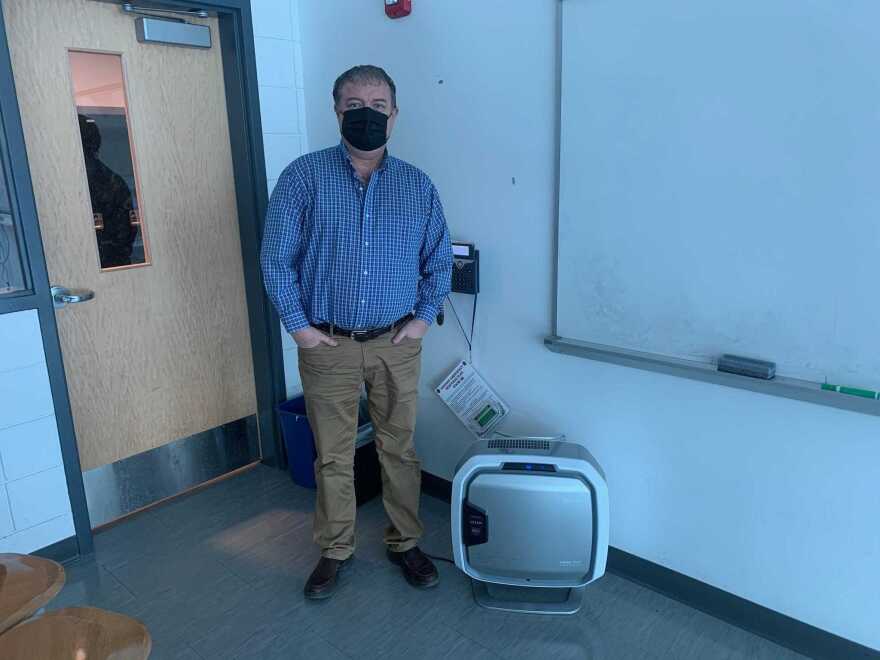One out of every 3 school districts in Connecticut have told the state that they do not have “sufficient funding” to maintain or improve the air quality in their schools. Roughly 1 out of every 5 schools reportedly do not have a program to evaluate the air quality in their buildings.
These are the results of a survey the administration of Gov. Ned Lamont completed last spring. It took the administration nearly six months to release this information to Connecticut Public’s Accountability Project.
This is all happening as the governor drastically scales back how much he will allow the state to spend on school construction projects while also rejecting calls for the state to help cover upgrades to air ventilation systems during the pandemic. The administration has also scaled back how many questions officials ask schools about their air quality.
Lamont believes the federal COVID relief money districts have received is enough to address air quality themselves.
“They’re the ones that are going to prioritize between ventilation systems, new filters, teachers, after-school programs, social workers,” he said during an interview. “Look, we can be helpful, but I really want the localities to take the lead on this, and I think they have the resources to do so.”
It’s not just the survey responses that tell a different story. A growing number of educators are also complaining that poor ventilation in their classrooms is making them sick. The state’s largest teachers union says each year more educators are filing workers’ compensation cases related to air quality issues in their schools. Some locally elected leaders also say the federal COVID aid is only enough to cover a tiny portion of the air quality upgrades they need.
The Centers for Disease Control and Prevention has said since early in the pandemic that good ventilation in classrooms is a key ingredient to reducing the spread of COVID.
Some prominent state legislators say the governor is wrong for not supporting state funding for air quality upgrades during a pandemic.
“After Newtown, we made millions of dollars available to towns to improve school security, and we felt that that was a priority. I don’t see a significant difference between school security [funding] that would address someone with ill intentions to harm children, to harm teachers, versus the harm that a virus or other health-threatening issues that come with tight spaces,” said state Sen. John Fonfara, co-chairman of the Finance, Revenue and Bonding Committee.
An analysis by Connecticut Public shows that the state’s 10 so-called Opportunity Districts — districts that have high concentrations of students living in poverty — report having more difficulty funding necessary air quality upgrades in last year’s survey.
“There are a lot of towns that don’t have the resources there. Unfortunately, we have, as you know, in Connecticut, it’s a tale of two states,” said Fonfara.
In Bridgeport, the struggling district used some of its federal COVID aid to purchase air purifier units for almost every teacher in the district. Some of those units were placed in schools built during another generation.

Jeff Morrissey, a high school English teacher in Bridgeport, received one of those units.
“I believe that it alleviated a lot of anxiety,” he said. “You have 29 students in the classroom. Some classrooms are more ventilated than others. Some classrooms have more availability to open the windows than others. But the fact that we all received those, it was a win.”
He added that several schools have outdated HVAC system that also need to be updated, and he hopes that happens soon, too.



